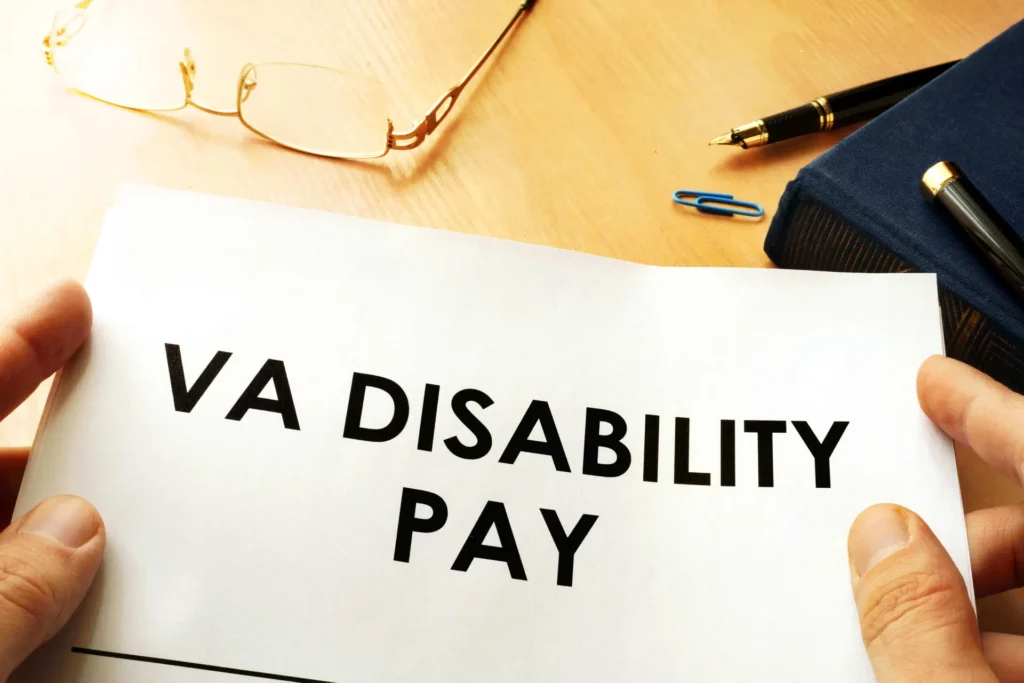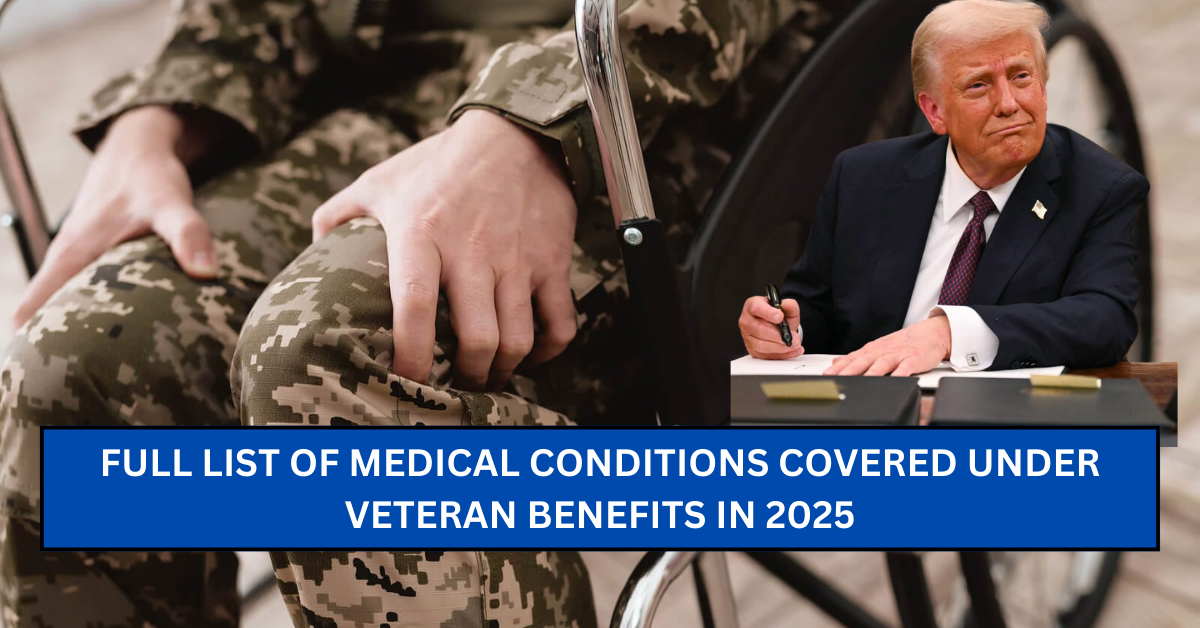The U.S. Department of Veterans Affairs (VA) provides disability compensation and healthcare benefits for a wide range of medical conditions that result from military service. As of 2025, the VA continues to expand its coverage, particularly for illnesses linked to toxic exposures and hazardous duty environments.
This article provides a comprehensive list of conditions covered, recent updates to VA benefits, and resources for veterans seeking assistance.
Who Qualifies for VA Disability Benefits?
- To be eligible for VA disability compensation, a veteran must have:
- A current medical condition diagnosed by a healthcare professional
- Proof that the condition is linked to military service (service connection)
- A disability rating assigned by the VA to determine compensation
Categories of Covered Conditions
The VA recognizes two primary types of conditions for benefits:
- Service-Connected Conditions: Directly caused by military service (e.g., injuries, PTSD).
- Presumptive Conditions: Automatically considered service-connected based on exposure history (e.g., Agent Orange, burn pits).
Below is the 2025 VA-covered conditions list, categorized by type.
Presumptive Conditions (No Proof Required)
Veterans with specific service locations or exposure history automatically qualify for benefits for the following conditions:

Agent Orange Exposure (Vietnam, Thailand, Korean DMZ, Certain Ships & Bases)
- Bladder Cancer
- Chronic B-cell Leukemias
- Hodgkin’s Disease
- Hypertension
- Ischemic Heart Disease
- Parkinson’s Disease
- Peripheral Neuropathy
- Prostate Cancer
- Respiratory Cancers (lung, bronchus, larynx, trachea)
- Type 2 Diabetes
- Soft Tissue Sarcomas
Burn Pits & Toxic Exposures (Post-9/11 Veterans & Gulf War Service)
- Asthma
- Chronic Bronchitis
- COPD (Chronic Obstructive Pulmonary Disease)
- Emphysema
- Glioblastoma (brain cancer)
- Interstitial Lung Disease
- Several rare cancers (kidney, pancreatic, head, and neck)
Radiation Exposure (Atomic Veterans & Nuclear Testing)
- Leukemia
- Lung Cancer
- Thyroid Cancer
- Multiple Myeloma
Service-Connected Conditions (Proof Required)
Veterans may receive benefits for conditions linked to service-related injuries, stress, or environmental hazards.
Mental Health Disorders
- Post-Traumatic Stress Disorder (PTSD)
- Depression
- Anxiety Disorders
- Schizophrenia
- Adjustment Disorders
Musculoskeletal Disorders
- Chronic Back Pain
- Joint Injuries (knees, shoulders, ankles)
- Osteoarthritis
- Rheumatoid Arthritis
Neurological Conditions
- Parkinson’s Disease
- Multiple Sclerosis
- Epilepsy
- Traumatic Brain Injury (TBI)
Cardiovascular & Circulatory Issues
- Hypertension (high blood pressure)
- Heart Disease (ischemic heart disease, coronary artery disease)
- Stroke & Residual Effects
Respiratory Conditions
- Chronic Bronchitis
- Asthma
- Sleep Apnea (when linked to military service)
Gastrointestinal Disorders
- GERD (Gastroesophageal Reflux Disease)
- Crohn’s Disease
- Ulcerative Colitis
Skin Conditions
- Psoriasis
- Eczema
- Chloracne (from chemical exposure)
Hearing & Vision Impairments
- Tinnitus (ringing in the ears)
- Hearing Loss
- Vision Loss

How to Apply for VA Benefits in 2025
If you have a service-connected condition, follow these steps to apply:
- Gather Medical & Service Records:
- Obtain medical records confirming diagnosis.
- Collect service records proving exposure or injuries.
- Submit a Disability Claim:
- Apply online via the VA website
- Mail your application to the VA regional office
- Get help from Veterans Service Organizations (VSOs)
- VA Disability Exam (C&P Exam):
- Some claims require a Compensation & Pension (C&P) exam.
Recent VA Benefit Updates in 2025
Hypertension is now a presumptive condition for more Vietnam veterans.
Burn pit exposure benefits expanded under the PACT Act.
New cancers added to Agent Orange & radiation exposure lists.
Conclusion
The VA continues to provide coverage for a broad range of conditions affecting veterans. In 2025, significant expansions in toxic exposure benefits and presumptive conditions have made it easier for veterans to receive compensation.
If you’re a veteran with a service-connected health condition, apply for benefits as soon as possible. Stay informed about policy updates and seek assistance from VA representatives or VSOs to ensure you get the benefits you deserve.
🔗 For assistance, visit: Veterans Benefits Administration
This article has been carefully fact-checked by our editorial team to ensure accuracy and eliminate any misleading information. We are committed to maintaining the highest standards of integrity in our content.

A senior at Yale-NUS College with interests in developmental and labour economics, as well as creative non-fiction and poetry. Currently, I’m studying as an Economics major and an Arts and Humanities minor (focusing on Creative Writing) with heavy involvement in the Singaporean journalism scene and involved in research on economic history and educational policy. I’m working as an author for The Octant, Yale-NUS’ student publication, as a writer for Wingspan, Yale-NUS’ alumni magazine, and as a tutor for the NUS Libraries Writer’s Centre. | Linkedin




